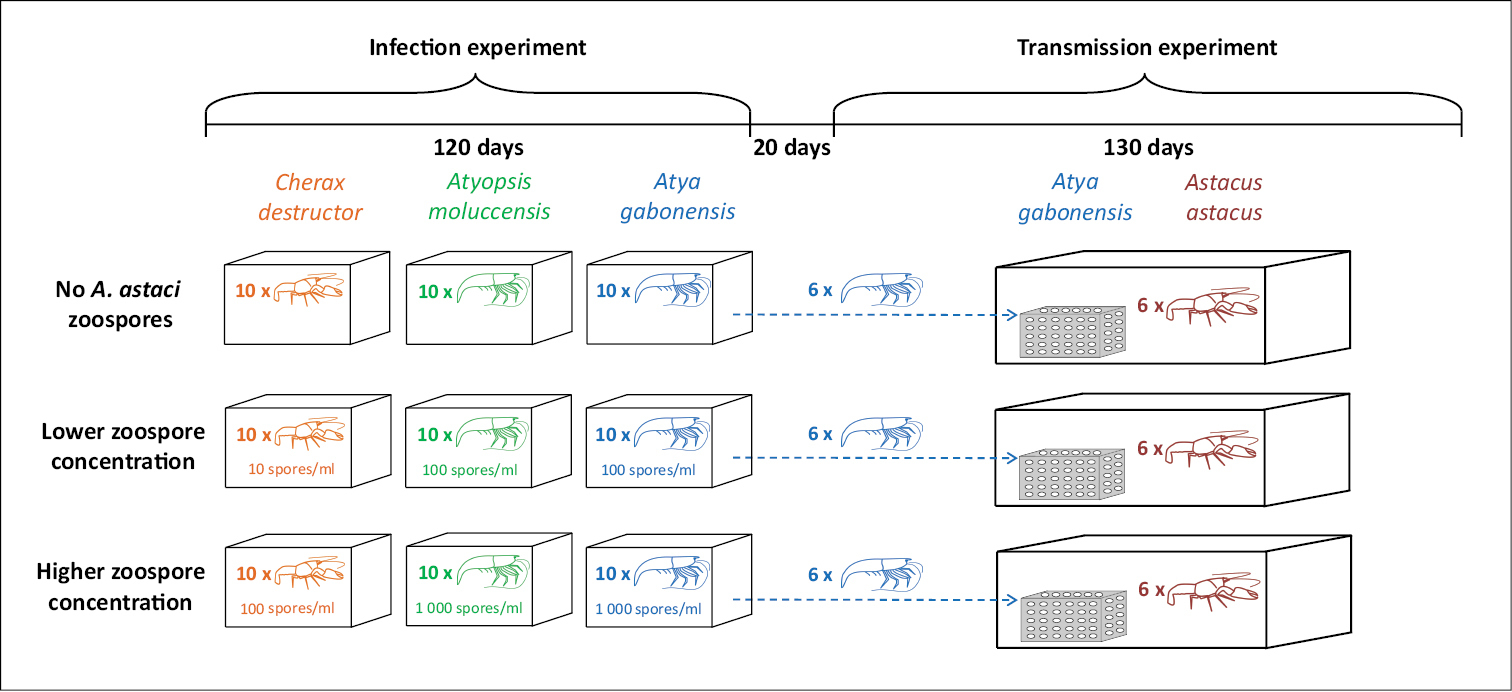
|
||
|
Summary of the experimental design. The study consisted of two subsequent experiments: the infection experiment (120 days long) that was followed after 20 days by a transmission experiment (130 days long). Ten individuals of C. destructor, A. moluccensis and A. gabonensis were used in each of the three treatments: no A. astaci zoospores (negative control group) and an addition of one of the two spore doses differing in concentration by an order of magnitude. Six A. gabonensis individuals from each treatment were subsequently used in the transmission experiment, and each individual was placed separately with one A. astacus. To avoid physical interactions and predation by crayfish, A. gabonensis were placed under perforated plastic cages. |